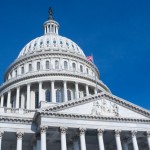
“Learning Leadership” column, July/August 2013 edition of eSchool News—The reauthorization of the Elementary and Secondary Education Act has eluded Congress for too long. Without Congressional action, the current administration has seized the moment and used regulatory fiat to implement its policies. But many of us feel that the policies being implemented lack counsel from the educators in the trenches.
The voices of teachers, principals, superintendents, and board members go unheeded, and we are on the verge of causing serious harm to an educational system weighed down by federal rules and regulations. The reauthorization effort will re-establish a democratic process that will allow those in the field once again to weigh in with suggestions that might put us back on the road to true education reform.
Unfortunately, bipartisan conversations are not happening, and we have been subject to both parties in both chambers creating their own bills [see story]. Nevertheless, superintendents are encouraged by the fact that there is more agreement than disagreement. For example, the 2011 bill that emerged from the Senate Health, Education, Labor, and Pension Committee shifted responsibility for educational accountability from the federal government back to the state and local levels. A similar approach can be seen in the bill crafted by House Republicans.
Twelve years into a bill expected to be renewed in 2007, No Child Left Behind is still the law of the land, except that waivers can be obtained from its insidious requirements in exchange for other rules and regulations. The 2011 bill called for the elimination of Adequate Yearly Progress, annual measurable objectives, supplemental education services, and the related funding set-aside—music to our ears.
(Next page: What school leaders hope the new law will include)
The one positive contribution of NCLB was the requirement that data be disaggregated by subgroups, and hopefully this will continue in whatever new version is passed. Since the inception of NCLB, the average performance of all students no longer can hide the poor performance of low-income students, those with limited English proficiency, or those with special needs. The disaggregation of data placed a spotlight on the achievement gap, and—while forcing us to confront the reality that many children indeed were being left behind—it also contributed to the belief that our public education system is failing. Over the span of NCLB, achievement levels have increased, but the achievement gap persists—primarily because the best students also have improved their achievement, not waiting for those behind to catch up. Closing the achievement gap remains our greatest challenge.
Technology is a powerful tool with the potential to close this gap. As we move toward a personalization of the education process, technology can help us realize this dream, allowing individual students learn at their own pace. Our National Superintendent of the Year, Mark Edwards, has made the Mooresville School District in North Carolina an example of how this can be accomplished.
The federal government can play a huge role in supporting this transition. A reauthorized ESEA must include language for an ed-tech program that supports infrastructure, professional development, and student learning—something the nation has lacked since fiscal year 2011. Further compounding this problem, school systems have been ravaged first by the recession and now sequestration, just as they prepare to implement online Common Core exams.
A reauthorized ESEA also would put an end to the waiver process. We have opposed the waiver process on the grounds that all school districts should be granted relief from NCLB requirements, not just those willing to trade one set of regulation for another.
Surprisingly, performance targets seem to have emerged as a possible obstacle to bipartisan discussions. Under NCLB, districts are required to make AYP based on criteria established by each state, with the unrealistic expectation that by 2014 all schools would be making AYP. We support an accountability model that grants states and districts the flexibility to design and implement multiple measures of student achievement. Holding a system accountable does not require that every child be tested every year. There needs to be a separation of testing for accountability and assessment to guide instruction. The federal government could easily use the National Assessment of Educational Progress to hold states accountable and leave school district accountability in the hands of the states, where it belongs.
Finally, we oppose the diversion of funds for competitive grants instead of using those dollars to increase formula funding. Competitive grants benefit only the few districts receiving them, while formula distribution benefits all eligible students. Poverty is the factor most responsible for the achievement gap; to divert dollars away from the children who need it most is unconscionable.
Daniel A. Domenech is executive director of the American Association of School Administrators.
- 2 ways to support eRate modernization - May 19, 2014
- A college readiness tool that every district should use - January 2, 2014
- Time to focus on the real education problem: Poverty - October 3, 2013

